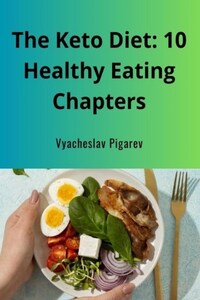Chapter 1: Introduction to the Keto Diet
What is a keto diet?
A ketogenic diet is an eating regimen that includes high amounts of fat, low to moderate amounts of protein, and very few carbohydrates. The keto diet is usually rich in foods such as butter, cheese, eggs, meat, nuts, oils, seafood, and seeds. It leaves little room for fruits, vegetables, grains, potatoes, sweets, and other carbohydrate-rich foods.
Although there are variations of the ketogenic diet, they all have the common goal of limiting carbohydrate intake. A typical ketogenic diet plan aims to get about five percent of calories from carbohydrates, 20 percent from protein and 75 percent from dietary fats. With a ketogenic diet of 2,000 calories per day – this equates to about 100 calories (25 grams) of carbohydrates, 400 calories (100 grams) of protein and 1,500 calories (167 grams) of dietary fat. Although some ketogenic diets, depending on their phase and caloric needs, may include up to 70 grams of carbs per day, 50 grams or less is the typical maximum intake goal.
By limiting carbs and controlling protein intake, the ketogenic diet aims to bring your body into a state of nutritional ketosis, a metabolic process that increases the production of ketones, which are produced by the liver and can be used as the body's primary source of energy. When we are not in ketosis, glucose (derived from carbohydrates) is our body's main source of energy.
What are ketones?
Ketones are water-soluble byproducts of fat breakdown in the liver. Ketone production is a normal bodily process that occurs regularly, including during sleep. Our liver always produces some number of ketones, but when our daily carbohydrate and protein intake is high enough, our ketone production remains relatively low.
How do dietary carbohydrates provide energy?
There are two kinds of carbohydrates: those that we can digest and dietary fiber that we cannot digest. When we consume digestible carbohydrates, our bodies break them down into their simplest forms: monosaccharides, fructose, galactose and glucose. Most of the carbohydrates we consume are eventually converted to glucose because glucose is the most common monosaccharide found in nature, and our body can convert fructose and galactose to glucose.
Glucose is crucial to our survival. A constant supply of glucose circulates in our bloodstream, which, with the help of insulin, makes energy available. Glucose stores are also stored in the liver and muscles in the form of glycogen. We usually have about a day's supply of glucose in the form of glycogen. When blood glucose levels are low, the liver breaks down glycogen to raise blood glucose levels. When we need energy for muscle contraction and blood glucose levels are low, our muscles break down their glycogen stores.
How do we get energy without dietary carbohydrates?
When we eat, exercise, sit or sleep, our bodies are busy controlling and providing our energy supply. And, when needed, our bodies produce the energy they need from non-carbohydrate sources.
One of the ways our bodies do this is through gluconeogenesis, a process that uses non-carbohydrate substances to produce glucose. We can also use protein and fat for energy. For example, the amino acids in the proteins we consume can be used during gluconeogenesis to produce glucose. And triglycerides, the type of fat we store in adipose tissue, can be broken down through lipolysis and used to trigger a sequence of events that generate ketones when our glycogen stores run out.
In short, by relying less on carbohydrates for energy, you increase ketone production. Although the liver always produces some number of ketones for energy from fat, the more the body switches to fat as an energy source, the more ketones production increases. But eating too much protein can reduce ketone production, making it difficult to achieve and maintain ketosis, so a true ketogenic diet has restrictions on protein intake as well as carbohydrates.











